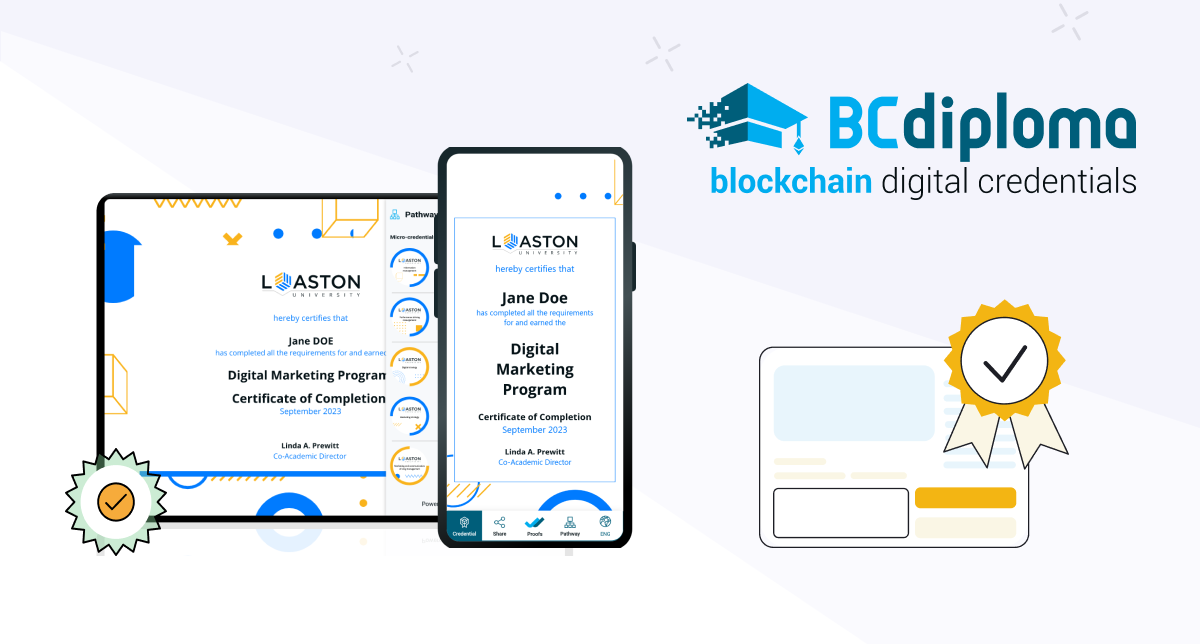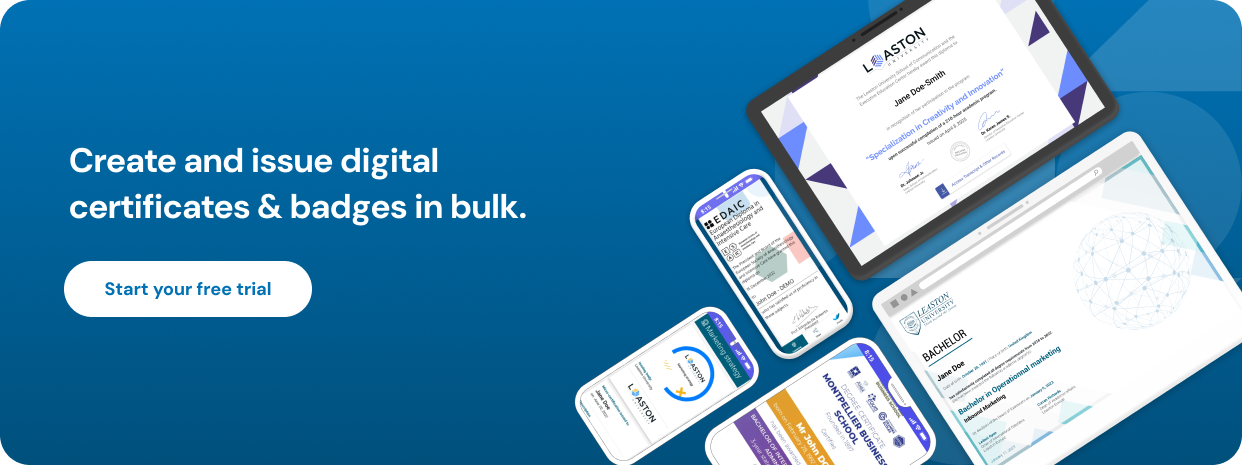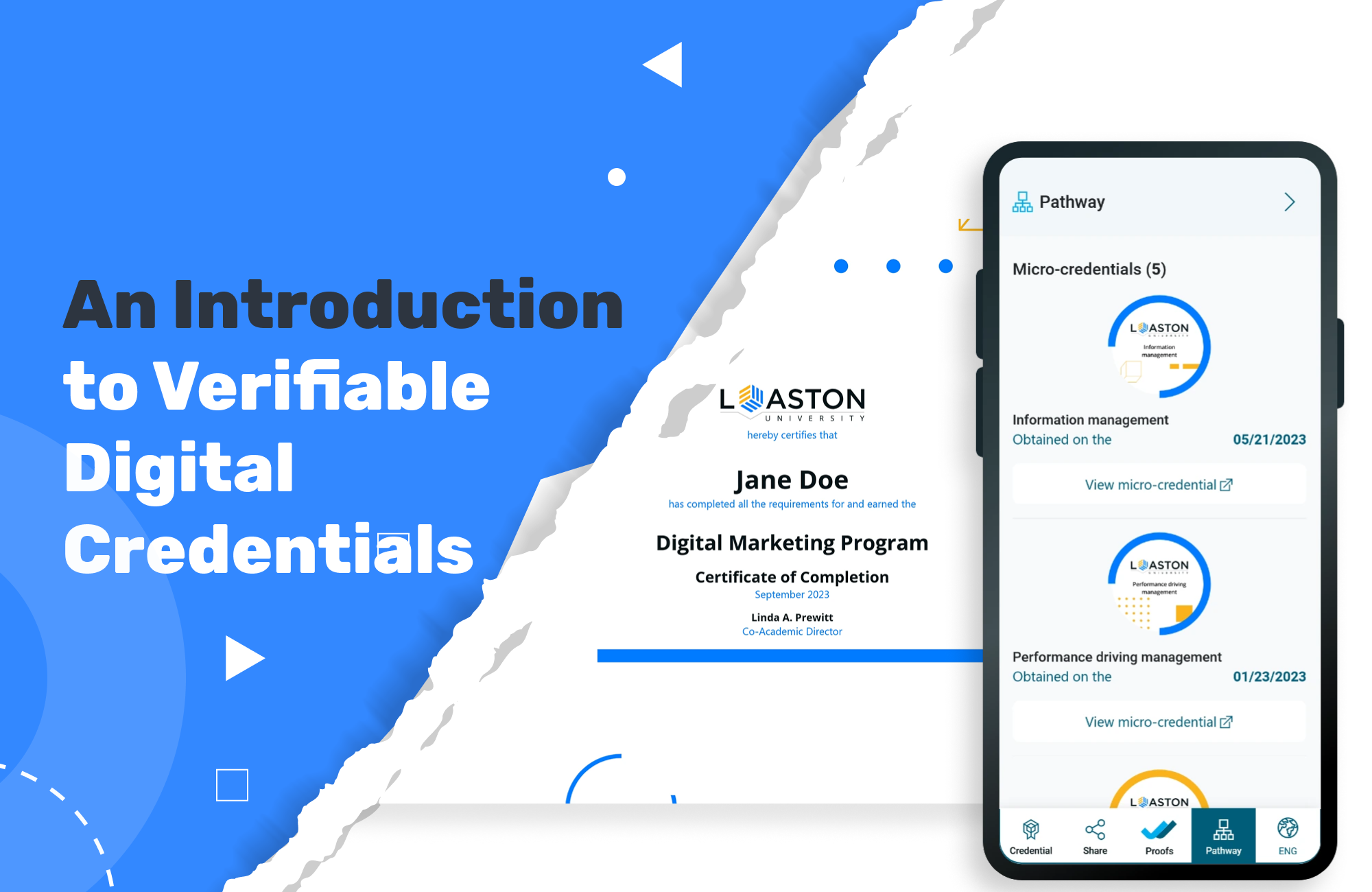The world is digital. Our identity, connections and careers are increasingly managed online. Yet, for decades, our most important achievements have been stuck in the past. We have relied on paper documents and PDF copies, physical documents that are difficult to manage, expensive to replace, and dangerously easy to forge. It’s high time for an upgrade. This is where the verifiable credential comes in.
The problem with traditional credentials
Think about a university degree. The physical diploma is a beautiful object, but its practical use is limited in online world. To show you have it, you might scan or take a photo of it, and then send it by email. An employer might call your education institution for verification, which is a slow and manual process. In this traditional paradigm, there is no instant, secure and universally accepted way to confirm the credential is real.
Normal digital files aren’t much better. A PDF of a certificate can be edited in seconds, leading to a lack of trust that creates friction for everyone. It slows down hiring for employers. It creates barriers for graduates. And it forces educational issuers to spend time and resources on processing manual requests. We clearly need a new paradigm for the digital age—one based on cryptographic evidence and user control over one’s own identity and related information.
What is a verifiable digital credential?
A verifiable credential is a tamper-evident, machine-readable set of claims about an individual. That sounds complex, but the concept is dead simple. It’s a digital statement awarded by an issuer to an individual that can be instantly checked by a receiving party. This creates a clear triangle of trust.
The three core roles
To understand any verifiable credential system, you need to know the players:
- The Issuer: This is the entity that creates and signs the credential. This could be a higher education institution issuing a diploma, a company issuing an employee badge, or a government agency issuing a dematerialized identity document. The issuer simply makes a claim about an individual.
- The Holder: This is the individual the credential is about, that is, the subject of the claim. This person receives the credential from the issuer and stores it in a secure software application. They have full control over this data.
- The Verifier: This is the party that needs confirmation of the credential. This could be an employer, another school, or any organisation that needs to verify the claim made by the issuer. This is the party that requests a presentation of the credential from the person.
This paradigm shifts power to the individual. Unlike a social media profile, where the platform owns the data, here the individual owns their verifiable credentials. They choose when and with whom they share their information.

Anatomy of a verifiable digital credential
So, what does a verifiable credential actually look like? If it’s not an image or a PDF, what is it? Well, it is actually a piece of code, usually in a format called JSON-LD. This makes it readable by both humans and machines. This code uses a standard set of properties.
Let’s look at a concrete example for a Bachelor of Science degree:
- @context: This property points to the vocabularies used, or what context defined terms like “Issuer” or “Degree” mean. Often, this points to a URL (or web address), such as https://www.w3.org/2018/credentials/v1, therefore linking to a full, globally-unambiguous definition on the web.
- type: This defines the type of credential it is, like “VerifiableCredential” or “UniversityDegreeCredential”.
- issuer: This is a unique identifier, often a URL, for the entity that has issued the credential. A receiving party can visit this URL to find the issuer’s public cryptographic key for validation.
- issuanceDate: The specific date and time the credential was issued.
- credentialSubject: This is the core of the credential. It’s an object containing all the claims about the subject. This is where you’d find the person’s identity and the specific details of the achievement. For our example, the credentialSubject might include properties like:
- id: A unique identifier for the individual.
- degree: An code object describing the qualification, e.g., { “type”: “Bachelor of Science”, “major”: “Computer Science” }.
The most important part is the proof. This is a digital signature created by the issuer using their private cryptographic key. This cryptographic signature locks the data, ensuring that it cannot be changed without invalidating it. This is the secret sauce that makes the credential truly verifiable.

How it works
The magic of this system lies in this simple and secure process:
- Storage: The individual receives the verifiable credential from the issuer and stores it in their secure application, on their phone or computer.
- Presentation: When an organization (e.g., a potential employer) requests evidence of a degree, the holder creates a verifiable presentation. This is a bundle containing the credential and is also signed by the individual to prove they consent to sharing it. They can even create a presentation with only some of the claims (a selective disclosure), to protect their privacy.
- Validation: The verifier receives the presentation. Their software automatically performs two checks. First, it checks the issuer’s signature using the public key found at the issuer’s URL. This confirms the data is authentic and hasn’t been tampered with. Second, it checks the subject’s signature to confirm they and they alone authorized this specific presentation.
This entire process can take seconds. It requires no phone calls, no emails, and no manual checks. It is a seamless flow of trusted data.
Beyond university degrees: digital badges and more
Imagine you have a special mailbox with two keys. One key is a public key, which you can copy and give to everyone. This key allows people to drop messages into your mailbox, but it cannot open it. The verifiable credential model is perfect for more than just a Bachelor of Arts or Science. Its flexibility makes it ideal for the new landscape of education, which includes lifelong learning, micro-credentials, and skill-specific training. This is where more fine-grained digital credentials shine. One specific type of verifiable credential that represents a smaller, more focused achievement is a digital badge. There are many ways these can be used.
The power of verifiable badges
Educational and training organizations can issue digital badges for a huge range of accomplishments:
- Completing a specific course or module
- Mastering a particular software or technical skill
- Demonstrating soft skills such as leadership or project teamwork
- Attending a workshop or professional development seminar
Such examples of verifiable badges provide immense value. For the holder, they can be used to build a rich, verifiable portfolio of their skills and experiences. They can easily share these badges on professional networks, giving them a competitive edge. For issuers, these badges extend their brand and create a living record of their educational impact. For verifying organizations needing to check them, they offer granular evidence of specific capabilities.
The technology that underpins all this can be enhanced even further. The use of blockchain digital credentials adds another layer of security and permanence. By anchoring the evidence of a credential on a blockchain, an issuer can guarantee that its validation information will be available forever, even if the issuer’s own website goes down.
The future is verifiable
The shift from physical to digital is inevitable. Verifiable credentials (VCs) offer a solution that is more secure, efficient, and user-centric than any system that has come before it. They restore trust in the digital world. They empower individuals to own and control their own identity. For educational issuers, they offer a way to issue modern, fraud-proof documents and badges that increase the value and prestige of their offerings. This is not a futuristic concept. The technology is here, and organizations around the world are adopting it, and building a solid foundation for the whole ecosystem, such as through the European Blockchain Services Infrastructure (EBSI) and European Blockchain Convention (EBC).
Why choose our platform for your digital credentials?
Transitioning to a new technology can be daunting. That’s why the BCdiploma solution is designed to make issuing blockchain-enabled digital badges and credentials simple. Our platform handles the complexity of cryptography and blockchain, allowing you to focus on what you do best: educating and training. With our turnkey solution, you can start issuing tamper-proof, internationally recognized verifiable credentials in minutes, enhancing your brand’s reputation and providing your learners with the permanent, portable and powerful evidence of achievement they want and deserve.
Frequently asked questions
Contact us for more information.
The crucial difference is the cryptographic signature. A PDF is just a picture of a credential, and it can be easily copied and altered. A verifiable credential contains a signature from the issuer that makes it tamper-evident. A verifier can mathematically confirm that the credential is authentic and unchanged.
A digital wallet is a secure application on a user’s smartphone or computer. It’s designed to store and manage identity information, including digital credentials like certificates and badges. The individual uses their application to receive credentials, store them securely, and create a verifiable presentation to share with others, giving them full control over their personal data and who has access to it.
Yes, absolutely. The core technology is standardized by the World Wide Web (www) Consortium (W3C), the same organization that develops standards for the general web. The Verifiable Credentials (VCs) Data Model is a mature specification that ensures interoperability. This means a credential issued by one platform can be stored in a third-party application, and checked by another organization’s system. This common framework is crucial for global adoption.
While not all verifiable credentials require a blockchain, using one provides unmatched security and permanence. A blockchain is a decentralized, immutable public ledger. When a credential’s cryptographic evidence is recorded on a blockchain, it becomes permanently verifiable by anyone, at any time, without needing to contact the original issuer. This protects the credential’s value against institutional changes, like a school closing, and offers the highest level of trust.
